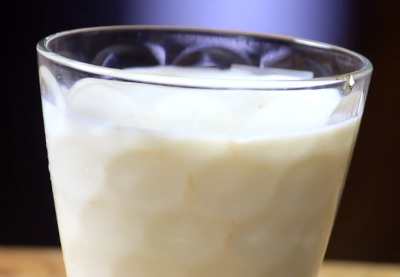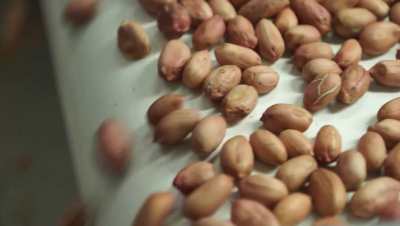Some foods are richer in protein than others. If you want to know about high protein foods, then this article is for you.
Protein is an essential building block for our body. And few would dispute the advantages of natural sources of protein over synthetic ones. Eggs, meat, vegetables, seafood are all foods that contain high amounts of protein, but they all have their own specific characteristics. A list of high-protein foods is in front of you.
The debate about carbohydrates, fats and their effect on our body has been going on for a long time. However, almost all experts unanimously state that protein is very important. Consumption of foods rich in protein has a lot of positive aspects. It promotes weight loss, increases muscle mass and gives strength. And these are just a few of the benefits.
Many experts in the field of healthy nutrition and fitness are convinced that the recommended daily protein intake is not high enough.
Table of the Protein Needs for Humans
| Person | Recommended average daily number of serves of lean meat and poultry, fish, eggs, nuts and seeds, and legumes/beans | Recommended average daily number of serves of milk, yoghurt, cheese and/or alternatives (mostly reduced fat) |
| Men aged 19–50 years | 3 | 2 1/2 |
| Men aged 51–70 years | 2 1/2 | 2 1/2 |
| Men aged 70+ years | 2 1/2 | 3 1/2 |
| Women aged 19–50 years | 2 1/2 | 2 1/2 |
| Women aged 51–70 years | 2 | 4 |
| Women aged 70+ years | 2 | 4 |
| Pregnant women | 3 1/2 | 2 1/2 |
| Lactating women | 2 1/2 | 2 1/2 |
Protein Facts to Know
- Protein is a fundamental part of a healthy diet.
- Proteins are comprised of chemical ‘building blocks’ called amino acids.
- Your body uses amino acids to build and repair muscles and bones and to make hormonal agents and enzymes. They can also be used as an energy source.
- Really high protein diets are not advised.
Protein quality is of course a measure of protein bioavailability, the generic term for the proportion of any nutrient that can be absorbed from the diet and utilized. Bioavailability comprises digestibility, chemical integrity, and freedom from interference in metabolism, highlighting those aspects of amino acid utilization that may be important with specific foods and food processing methods.
WHO.int
So, what foods are rich in protein?
Foods High in Animal Protein
Eggs
Long before synthetic protein was invented, eggs were indispensable in the diet of athletes. However, any meat steak would surpass an egg in terms of protein content, as the figure does not exceed 0.25 oz (7 grams.) The secret to success is this:
- Protein from eggs is 95% digestible,
- The egg contains a minimum of fat and carbohydrates,
- Easy to prepare.
- They are also full of vitamins, minerals, antioxidants necessary for vision, and nutrients necessary for brain activity that we don’t get enough of.
A whole egg is a source of protein, and egg protein is protein in its purest form.
1 whole large egg is 0.21 oz (6 grams) of pure protein, 78 kcal.
Chicken Breast
Chicken breast is a very famous product with the highest protein content and is considered a dietary product because of its low fat content (below 8%). But the protein content per 3.5 oz (100 grams) of meat exceeds 24%. Thanks to this, the body gets 130 kcal.
Chicken breast is very easy to cook and incredibly delicious if you do it by following simple cooking rules.
Turkey Breast
Turkey breast is very similar in its characteristics to chicken breast meat and is simply indispensable for those who want to lose weight without reducing muscle mass.
It is extremely appetizing and contains few calories.
Boiled turkey contains selenium, which is essential for maintaining the hormonal balance.
3.5 oz (100 g) of turkey contains 0.67 oz (19 g) of protein, which provides the body with 84 kcal.
Red Meat

Beef is an important and incredibly appetizing source of protein. Moreover, it contains high amounts of vitamins B3 and B12, iron and zinc.
3.5 oz (100 g) of lean beef contains 0.56 oz (16 g) of protein and 150 kcal.
Dairy Products Rich in Protein
Cottage Cheese (cottage cheese)
Cottage cheese, or cottage cheese is cottage cheese with the addition of fresh, salted cream. This cheese is extremely low-calorie. But it contains a lot of calcium, phosphorus, selenium, vitamin B12, riboflavin (vitamin B2) and other variety of trace elements.
3.5 oz (100 g) of cheese contains 0.39 oz (11 g) of pure protein.
The following cheeses are also rich in protein: Parmesan, Swiss cheese, mozzarella and cheddar.
Greek yogurt, or filtered yogurt
Low in calories, enriched with calcium and probiotics, this yogurt has an extraordinary flavor and a thick, creamy texture.
3.5 oz (100 g) of nonfat yogurt contains 0.35 oz (10 g) of protein (exactly as much protein as 1.41 oz (40 g) of a chicken breast).
Moreover, yogurt is a source of magnesium, riboflavin, and pantothenic acid.
Its caloric value is 53 kcal per 3.5 oz (100 g).
Just make sure that you choose yogurt without added sugar. Fatty yogurt is also very rich in protein, but more caloric.
The following products are also rich in protein: plain fat yogurt (24%) and kefir (40%).
Milk

Milk is a very important source of protein, but a large number of adults have trouble digesting cow protein. But if you are not one of them and can enjoy milk to the fullest, it is an ideal source of high-quality protein.
Milk contains, in small amounts, almost all the nutrients our body needs.
Milk is enriched with calcium, phosphorus and riboflavin (vitamin B2).
The protein in a glass of milk is about the same as in one egg, which is 0.28 oz (8 grams.)
Because of the different percentages of fat content, the calories range from 44 to 64 kcal per 3.5 oz (100 g) of milk.
Whey Protein
It is made from whey, which is formed during the manufacture of cheese.
Whey is a high quality protein from dairy products and has proven to be a very effective muscle builder, as well as an aid in the fight against excess weight.
It is rapidly absorbed by the body and is rich in amino acids.
Each serving 1.23 oz (35 g) contains 0.95 oz (27 g) of pure protein.
It is taken according to your weight.
Nuts and Cereals Are Major Sources of Protein
Almonds
Almonds are the most protein-rich of all nuts at 18%.
3.5 oz (100 g) of almonds contains 0.67 oz (19 g) of pure protein.
However, they are very caloric at 645 kcal per 3.5 oz (100 g) of nuts. The main calories are saturated and unsaturated fatty acids. It also contains vitamin A, thiamine, many B vitamins and other micronutrients.
Pistachios (13%) and cashews (11%) take second and third places among the protein-rich nuts.
Peanuts

Peanuts have an optimal ratio of amino acids, so they are perfectly absorbed by the human body. It is also rich in various vitamins, lionolic and folic acid, antioxidants and other beneficial trace elements.
The nutritional value of peanuts is 552 kcal per 3.5 oz (100 g).
There are 0.92 oz (26 g) of protein in 3.5 oz (100 g) of peanuts.
Pumpkin seeds
Pumpkin seeds are the edible seeds known as pumpkin seeds.
Pumpkin seeds are incredibly healthy: they contain a lot of zinc, iron, magnesium, phosphorus and manganese, as well as a great variety of vitamins (B, A, E, K groups)
3.5 oz (100 g) of seeds contain 0.67 oz (19 g) of protein.
Flax seeds (12% calories), sunflower seeds (12%) and chia seeds (11%) are not far behind pumpkin seeds in protein content.
Stuffed cereals
Stuffed cereals are amazing in their nutritional value and content of nutrients – they are rich in protein and ideal as a breakfast.
One hundred grams of herkules have 352 kcal.
The flakes are rich in vitamins B, magnesium, iron, selenium, phosphorus and many other trace elements.
In 3.5 oz (100 g) of cereal contains 0.35-0.42 oz (10-12 g) of pure protein.
Quinoa
Few people have heard this name, and even fewer are fully aware of the usefulness of this cereal. By the way, quinoa is one of the top 20 healthiest foods with high protein content.
One hundred grams of cereals contains more than 0.49 oz (14 g) of protein, and this is an excellent source of protein.
This crop is also rich in all kinds of vitamins (A, group B, C, E) and trace elements such as iron, sodium, zinc – to name a few.
Lentils
Dishes made with lentils are characterized by great taste and an unimaginable array of micronutrients. Boiled lentils contain vegetable protein (about 8 grams per 100 g), but because of their low amino acid content, they are very slowly absorbed by the body.
Lentils are rich in iron, magnesium and folic acid. One more important feature of lentils is their inability to accumulate toxins, so we can safely call it an environmentally friendly product.
The caloric value of lentils is 112 kcal per 3.5 oz (100 g).
Ezekiel Bread

Nutritious and easy to digest, Ezekiel Bread is made from sprouted grains and legumes including millet, barley, wheat, soybeans, and lentils.
Ezekiel is unique in that it is a very rich source of protein, fiber and a variety of other micronutrients.
One slice of bread contains 0.14 oz (4 grams) of protein and 80 calories.
Foods High in Vegetable Protein
Professional athletes have turned to plant-based diets in the peak and latter stages of their careers and experienced benefits that include quicker recovery from workouts, injury prevention and overall energy.
USA Today
Broccoli
This type of cabbage is the vegetable with the highest protein content (100g of cabbage contains 0.1 oz (3 g) of pure protein), but it is also a storehouse of vitamins and minerals that are essential for our health – vitamins A, B, E, C, K, fiber, iodine, phosphorus and other micronutrients.
Broccoli also contains bioactive nutrients that help fight cancer cells.
In addition, broccoli is low in calories: only 30 kcal per 3.5 oz (100 g).
Brussels sprouts

This diminutive cabbage contains a significant amount of high-quality, easily digestible protein (about 4 g per 3.5 oz (100 g) of cabbage).
It is also rich in fiber, vitamin C, phosphorus, and provitamin A.
Like most vegetables is low-calorie, which allows it to fit perfectly into the diet of people looking to lose extra pounds. Nutritional value is 43 kcal per 3.5 oz (100 g) of product.
Fish and Seafood Are the Most Important Protein-rich Foods
Fish

Fish is an extremely healthy food for many reasons.
It is rich in many trace elements, and most importantly, it contains Omega-3 fatty acids, which are essential for heart health.
Different kinds of fish have different amounts of protein in their chemical composition. For example, salmon has 74 oz (21 g) of pure protein per 3.5 oz (100 g) of food, while its caloric value is 172 kcal.
Among other fish, tuna stands out in particular.
Tuna is practically pure protein because it has very little fat and calories. Tuna contains a large variety of nutrients and a significant number of omega-3 fatty acids.
3.5 oz (100 g) of tuna contains 1.02 oz (29 g) of protein, which gives the body 96 kcal.
Shrimp
Shrimp is a treasure trove of protein, vitamins and minerals. Shrimp is a low-calorie food, but full of a variety of nutrients, including iodine, selenium and vitamin B12 and OMEGA-3 fatty acids.
3.5 oz (100 g) of shrimp contain 0.63 oz (18 g) of protein, which gives the body 84 kcal.
And finally,
When formulating your daily diet, you should alternate between foods high in protein of plant and animal origin to balance your diet and ensure you get other micronutrients that are critical to your health.
About the Author
Reyus Mammadli is the author of this health blog since 2008. With a background in medical and biotechnical devices, he has over 15 years of experience working with medical literature and expert guidelines from WHO, CDC, Mayo Clinic, and others. His goal is to present clear, accurate health information for everyday readers — not as a substitute for medical advice.







